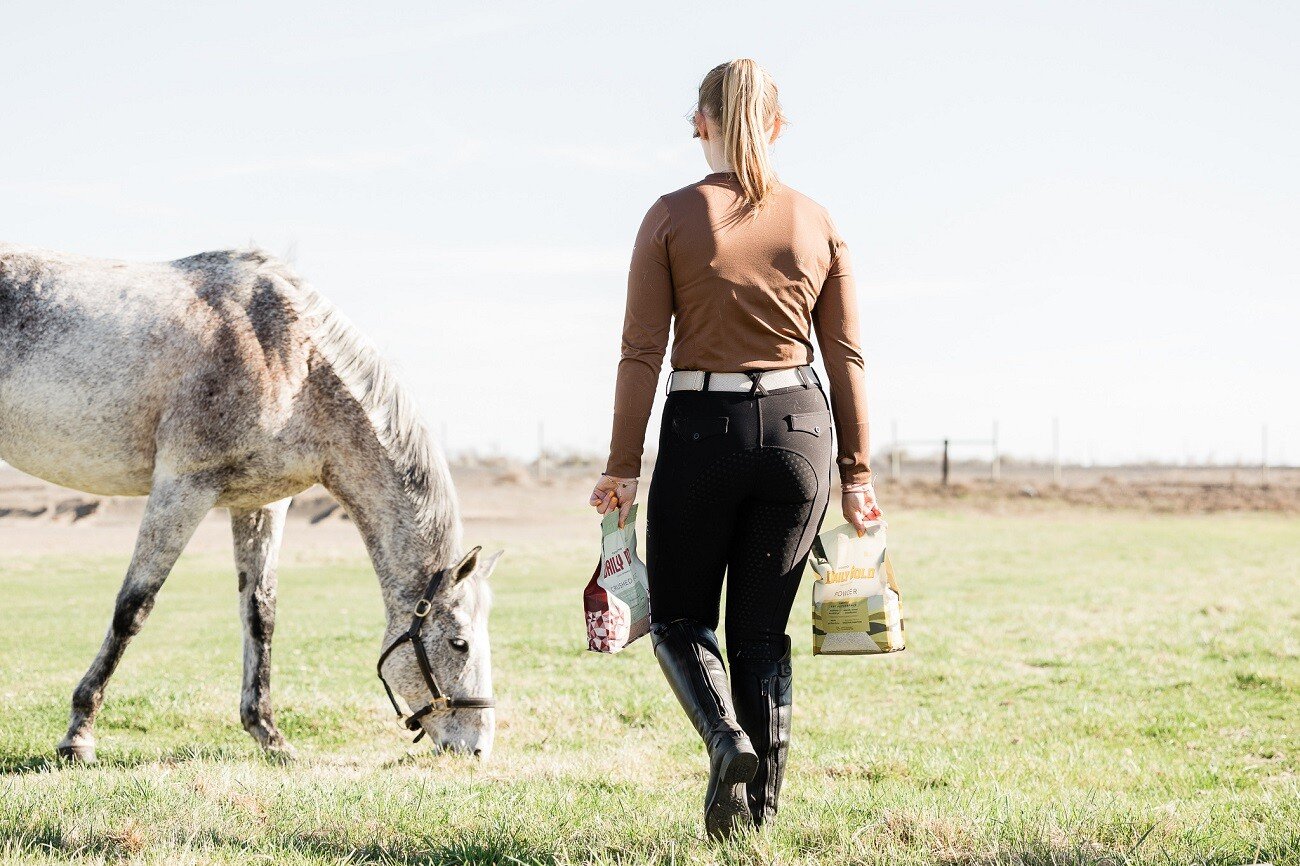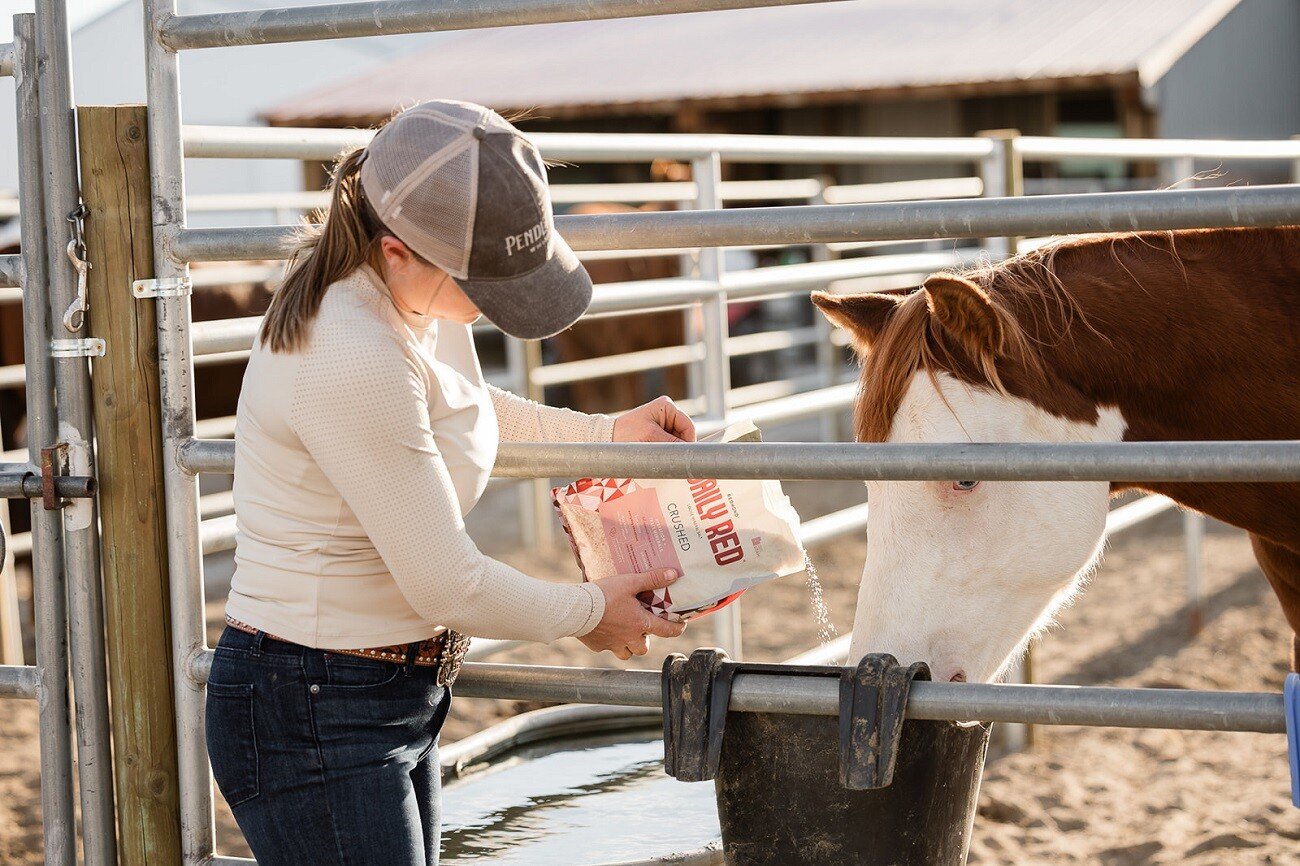The Seasons Change — So Should Your Horse's Minerals!
September 15, 2023
The Seasons Change — So Should Your Horse's Minerals!
As the seasons and leaves change, so do your horse’s needs both inside and out. Fall and spring are the times to evaluate your equine mineral supplements and ensure you’re feeding the right loose minerals to provide the best care.
Let’s talk about why a good mineral salt is necessary in both fair weather and foul, and help you navigate which Redmond products suit the seasons and your horse.
Why Horses Need Salt in Winter & Every Other Season
During warm weather and increased physical activity, horses need a balanced mineral salt to help replace electrolytes lost through sweat, keep energy levels up, and support a dozen other critical functions. But what about winter? Is salt necessary for horses during cool months if temps are lower and workload is lighter?
Salt is the most crucial mineral horses require, and supplying it year-round—including through winter—is essential! Horses are less inclined to drink when it’s cold, putting them at risk for severe complications like impaction and colic. And while winter coats provide a cozy barrier against harsh weather, they also make horses sweat more with even moderate exercise.
So, whether the sun is beating down or snow is swirling, your horse needs loose salt and minerals to:
- Help sodium levels stay balanced and trigger thirst
- Replenish electrolytes and support healthy hydration
- Encourage a healthy coat, mane, tail, and strong hooves
- Support digestion, nerve and muscle function, and overall wellness
Do Horses Need a Salt Block/Rock, Loose Salt... or Both?
A study by Kentucky Equine Research measured horses’ voluntary intake of loose salt versus block salt over time and how it affected water consumption. Trial results showed horses drank significantly more water when given access to loose salt.
To ensure an adequate daily serving of loose salt and minerals for your horse:
- Feed 1 to 2 ounces of Daily Red Crushed, Daily Red Crushed Garlic, Daily Red Fortified, or Daily Red Fortified Garlic loose salt in your horse’s feed. Our supplements provide 60+ balanced trace minerals and electrolytes to improve hydration and health.
- Add a free-choice Redmond Rock to the stall or pasture to provide access to additional salt if your horse’s day demands more.
Garlic is Worth its Salt for Horses in Springtime and Summer
What’s not to love about spring? The grass greens up, riding season picks up… and dreaded flies begin to wake up. That’s what’s not to love. Which is why in springtime you should switch horses' loose minerals to include added garlic.
A Saskatchewan study found that feeding garlic effectively reduces the number of flies landing on, biting, and irritating livestock. The study showed cows fed with a trace mineral salt fortified with garlic had 52% fewer flies than control groups that received trace mineral salt without garlic.
Daily Red Garlic Supplements – Fly Control Mineral for Horses
Daily Red Crushed Garlic and Daily Red Fortified Garlic are nature-made, mined trace mineral salt supplements horses love! We also add bioidentical garlic oil—the most bioactive and potent form of garlic for horses.
Daily Red garlic products are "sweat-through" repellents that offer your horse protection from the inside out. As a horse consumes the mineral salt, the garlic oil is absorbed into the bloodstream and sweat out through pores to repel flies on horses, ticks, and other pesky insects.
Choosing a Daily Red garlic supplement is a smart, safe, and effective choice as a spring and summer fly control mineral salt. It does double duty to keep your horse hydrated, healthy, and safer from disease-carrying pests. Let’s cover when to start and stop feeding garlic seasonally.

Starting Garlic in THE SpringTIME
The map above shows generic zones for when fly season begins and ends across the continental United States. Did you find your area on the map? Great! For best results, begin feeding a Daily Red garlic supplement 4-6 weeks before fly season begins in earnest in your neck of the woods, as it takes some time for garlic to reach its full fly-fighting power.
For best results, do not feed your preferred Daily Red garlic product free choice; instead, add it to your horse’s feed to ensure adequate consumption. If your horse has a picky palate, introduce it in small amounts and gradually increase it until you’ve reached the full daily serving. This will help horses get used to the new taste.

Stopping Garlic in the Fall
You now know when to start feeding a Daily Red garlic supplement. So, when should you stop? Let’s again refer to the fly season map above.
- For Zone 1, begin feeding in March and continue through the end of fly season in September.
- For Zone 2, begin feeding in March and continue through September. (Garlic will linger in your horse’s system and continue providing fly protection for several weeks even after you stop feeding.) Allow your horse a 6-month break before resuming.
- If you live in Zone 3 and battle bugs most of the year, feed your Daily Red garlic supplement for 6 months during the worst of fly season, then give your horse a 6-month break before continuing.
You should switch to Daily Red Crushed or Daily Red Fortified minerals during fall and winter or anytime your horse is taking a break from Redmond garlic products.

Why Can't Horses Eat Garlic Supplements Year-Round?
So why do horses need to cycle on and off garlic supplementation? Why can’t you feed it year-round? How much garlic is safe? Great questions.
While garlic touts a catalog of beneficial qualities, it can be detrimental if your horse consumes it in large doses or for extended periods without breaks. Let’s help you better understand and feel comfortable supplementing it.
Garlic contains a compound called N-propyl disulfide. This study showed high doses of it (giving a 1,100-pound horse 200 or more grams of freeze-dried garlic per day) can break down your horse’s red blood cells, causing Heinz body anemia. The good news is garlic supplementation in small amounts is very safe and ensures your horse gets the benefits without negative side effects.
Recommended Dose of Garlic for Horses
The National Research Council (2009) stated an average 1,100-pound horse can conservatively consume 7.5 grams of garlic per day without danger of developing anemia—even if it’s consumed long term.
An average serving of Daily Red Crushed Garlic and Fortified Garlic supplements contain 6 grams of garlic—a very safe dose. However, if you’re worried your horse may have or may develop anemia, check with your vet before feeding. Also, inspect your pasture for garlic growing wild. A horse snacking on wild garlic may develop anemia if additional garlic is added to its diet.
Make the Seasonal Switch
We hope you feel more informed about the importance of mineral salt supplementation and which Redmond products best suit the seasons! Click below to shop our supplements and swap minerals to help your horse stay hydrated and healthy year-round.
Learn More
- Discover five additional ways to keep insects and flies off of your horse during spring and summer.
© Redmond Equine 2023. All rights reserved.
Related posts

Loose Minerals Helped Shanon's Rescue Horse | A Redmond Story
Many horses are deficient in critical trace minerals. Redmond Rock natural salt lick and loose minerals provide horses the minerals they need for...
December 18, 2024

Why Shelby Switched to Loose Horse Minerals | A Redmond Story
Horses may ignore salt blocks and become dehydrated. Redmond Rock Crushed loose mineral salt provides needed trace minerals and electrolytes for...



